A Home at the End of the World 🏠⛵️

🌎 The Big Topic: Why I love Provincetown
I wrapped up the summer in Provincetown, Mass., for the third summer in a row. The town, clinging to a sandy spit at the end of Cape Cod, is a popular gay vacation destination.
I’ve read several essays this summer about the town, but I don’t think they capture what I like about it, so now it’s my turn to explain. Most essays focus on the excellent food, sightseeing, nearby beaches, and plethora of shops and art galleries. These features are all great but I’ll focus on a few things many magazines hesitate to publish.
First, a description of the geography. The town is about two streets wide and runs 3 miles long, clenching a harbor on south and sheltered from Atlantic winds by the sandy groves of the Province Lands to the north.
The main street, Commercial Street, runs 2½ miles from the town’s east end to the cape’s western tip. The town lacks a boardwalk and the only other street running the full length of town is the parallel Bradford Street, a street lacking sidewalks and carrying a moderate volume of car traffic. A majority of the shops and restaurants are on Commercial, cementing its position as the town’s de facto promenade.
Walking the length of Commercial from east to west, you watch the town evolve. The east end starts with houses and small hotels that give way to art galleries, sapphic-oriented inns, and even a feminist bookstore with a sign out front reading, “48 years grateful for my abortion.”

The center of town is more densely packed with restaurants, clothing stores, candy shops, performance venues, street performers, drag queens advertising their comedy shows, the town hall, the ferry terminal, and the looming Pilgrim Monument.
In the 19th century, the town’s economy shifted from whaling, increasing obsolete thanks to the discovery of petroleum, to fishing, which was less capital intensive and for which the new railroad had opened up access to markets in New York and Boston.
At the start of the 20th century, the town’s worthies, eager to soak up burgeoning mass tourism dollars, thought a tower to commemorate the Pilgrim’s 1620 arrival in Provincetown Harbor might do the trick.
In 1907 President Teddy Roosevelt laid the cornerstone and in 1910, President Taft dedicated the granite tower, which is modeled after the main bell tower in Siena, Italy. What a medieval Italian bell tower has to do with British religious dissidents sailing across the Atlantic is anyone’s guess.
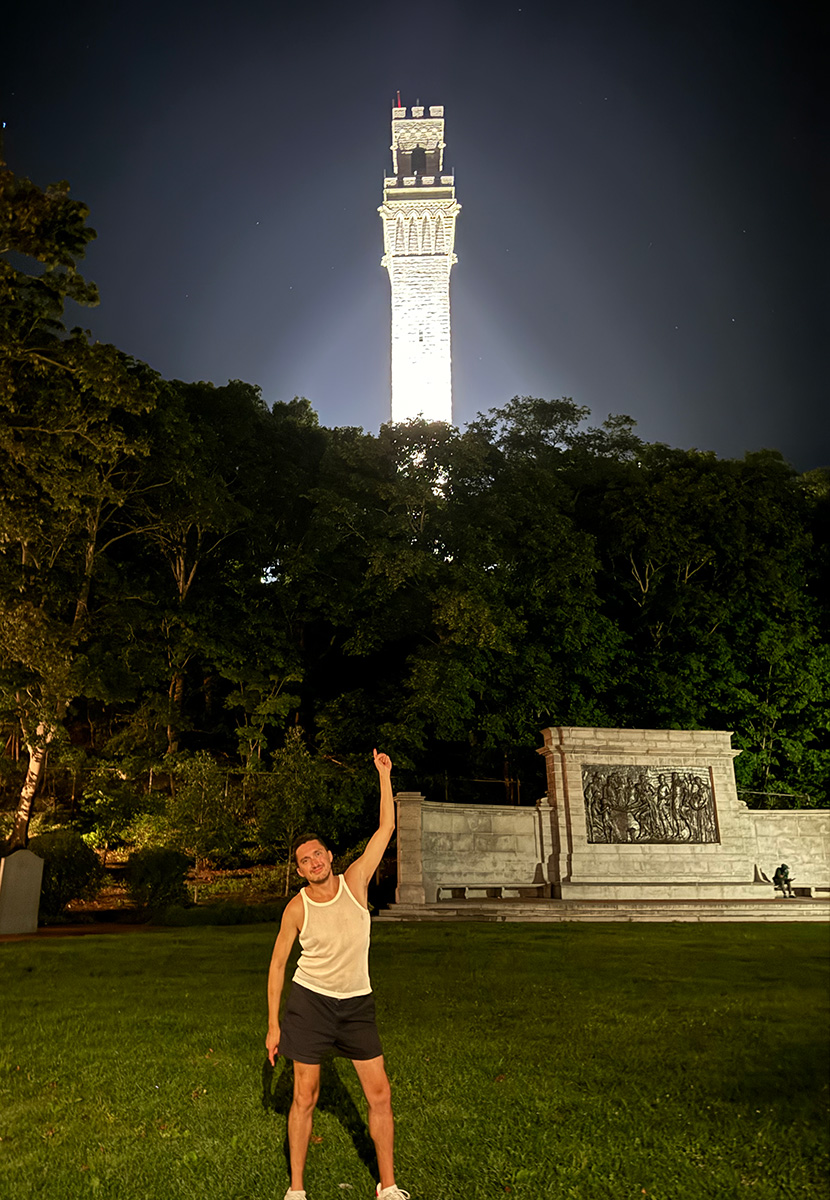
Continuing westward on Commercial, the crowds start to thin out. On one of my many journeys along this street this summer, there was a moment when I noticed nearly everyone left walking on the street was a man. I had crossed an invisible threshold into a gayborhood just after the little lane that leads to Atlantic House, but a tad before reaching the Boatslip Inn.
Atlantic House
Atlantic House (a.k.a. A-House) is a bar and dance club with storied history. It has existed in some form or another as a hotel and bar since the 19th century, hosting such luminaries as Mark Rothko and Eugene O’Neill and showcasing performances by Miles Davis, Billie Holiday, Eartha Kitt, and Ella Fitzgerald.
Posters of some of these past performers hang above the dance floor. I noticed this one night, dancing among the sweaty and slippery messes, few of whom I think made the connection between the decor and history of where they were dancing.
These days different DJs curate the dance floor. One Tuesday night we danced to Depeche Mode and the Pet Shop Boys and another night was heavy on the more contemporary Charli XCX, Troye Sivan, etc.
The doors behind the dance floor reveal a patio that wraps around the building and provides and quieter and cooler reprieve from the intensity of men’s bodies inside.
Gifford House
Around the corner from A-House is Gifford House, which has been an inn since James Gifford, a big Pilgrim Monument proponent, opened it in the 19th century.
One night a group of us went to the Gifford House. When you spend several days with the same people, you feel more comfortable taking a break from them, so while they wandered off to the patio or balcony, I listened to a woman sing at the piano. She was excellent, her voice heavenly.
However, one floor below is Purgatory, a dungeon-like bar and dance club reachable from the genteel main floor of Gifford House and from the outdoor patio. Wander past the bar and dance floor and you’ll find a room so dark, it’s hard to see anything, so you must use your other senses to piece together an image of the bacchanal unfolding mere inches away from you.
The Boatslip, On Deck, and Below Deck
The Boatslip Inn is a must-visit venue for every gay visitor. In a town of quaint Victorian and New England architecture, the Boatslip’s 1968 edifice is unremarkable. But that’s not the point. The hotel has an expansive seafront deck that hosts a DJ every evening from 4 to 7 pm for a “tea dance,” a tradition that goes back to the 1950s as a way for gay men to socialize without running afoul of the law.
We bought a week pass for Tea because it also gives you admission to use their pool and deck chairs during the early afternoon.
Tea is a way to start the evening, socializing with people you came with and people you just met. Each night has an optional theme. Here I am attired for “golden” night:


Originally the Boatslip’s deck was just a tad above the sand so that you could step off the deck and onto the beach. A winter storm in 1978 wrecked the deck. The inn’s proprietors rebuilt the deck elevated about eight feet above the sand, enough space for people to stroll under.
They do more than stroll, though. As the tides slide under and out of the deck’s bottom, much to the relief of the Boatslip’s insurance actuaries, men use it as a place to have sex with each other after the sun has set and the night is winding down. It has earned a lascivious sobriquet, the Dick Dock, but I cheekily refer to it as the Richard Dock Memorial Seashore as though Congress had officially bestowed this venue with formal dignity.
One night after getting hot, sweaty, and shirtless on the dance floor of Atlantic House with another guy, we decided to go back to his hotel room.
As we walked arm in arm down Commercial, I suggested we go under the dock, proclaiming, “It’s a cultural experience!” barely covering my prurience with a thin veneer of intellectualism. He was not interested in sand and the lecherous leers of strangers so we retired to his hotel room. My midnight anthropology will have to wait for another year.
Boy Beach
Continuing west on Commercial, the street ironically becomes almost all residential, with a few exceptions, including the heavy-martini Monkey Bar, Relish sandwich shop, and the Red Inn, where we always book a dinner reservation each year. You pass the American Horror Story house and a manse from the 1850s octagonal house craze.
Finally at the very western end of Commercial Street sits the Provincetown Inn, which has a swimming pool that is open to the public for free and is shaped like a pilgrim hat.
What lies beyond that is far from puritanism. Trek 20 minutes through the marshes of ankle-high, clear sea water and you’ll reach Boy Beach, a remote, but extensive stretch of sand where men (and a few women) stroll and sunbathe clothed or unclothed.
The dunes behind the beach stand 15 feet high, with walking paths punctuating the low level vegetation that clings to the tops of the dunes. You’ll always find one or two people standing atop the dunes, heads up like prairie dogs, glancing landward, where men are either watching, seeking, or engaging in various forms of sex, out of view of the beach.
In my days as a newly-out gay in my early 20s, I would’ve been utterly scandalized of the brazenness of behind-the-dunes activities, but now it’s something of a curiosity. Life is short and boys will be boys.
Boy Beach is a metaphor for the town itself, but distilled to id form. You make a long trek to get there and you’re there intentionally; it’s not on the way to anything else. The intentionality makes the mood of Provincetown so special.
Several times I’ve heard people refer to Provincetown as an island, even though it’s part of a cape connected to the North American continent. At first I corrected friends, but then realized it feels psychologically like an island: for many queer people it feels like a place where we can feel unburdened, insulated from judgment and hostility of a world that doesn’t always understand.
⏬ Scroll to the end to read my guide to bars, restaurants, sightseeing, and shops ⏬
📺 The Screen

Palm Royale (Apple TV+)
This series follows the scheming of a social striver clambering her way into the social circles of a wealthy private club in Palm Beach, Fla, in the late 1960s. The show satirizes the marriages of convenience, the self-serving charity work, and gossipy backstabbing of the bored and wealthy.
Industry (continued)
I’m still watching Industry, which I mentioned in a previous issue. Brendon Holder in the Washington Post describes it more eloquently:
There is irritation — stemming from the immoral decisions of the show’s dizzying characters and their blitzing banter — and there is the feeling of being keyed up, sometimes literally, as we watch them do cocaine bumps from keys in bathrooms. There is so much movement in the series that you can never quite get your bearings. Episodes are equipped with shifting power dynamics; characters fade in and out across seasons, contributing to the feeling of being on-edge.
🖼️ The Gallery
Paris 1874: The Impressionist Moment
National Gallery of Art | Washington, D.C. | September 8, 2024 - January 19, 2025
The star of this excellent exhibit is Claude Monet’s “Impression, Sunrise,” the painting that named the Impressionism art movement.
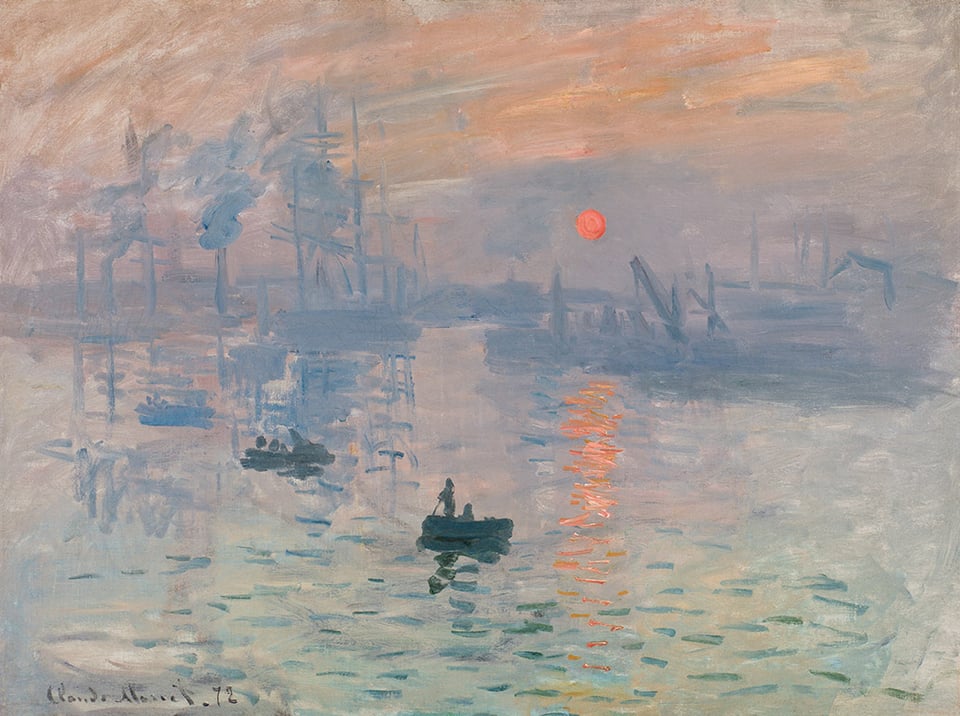
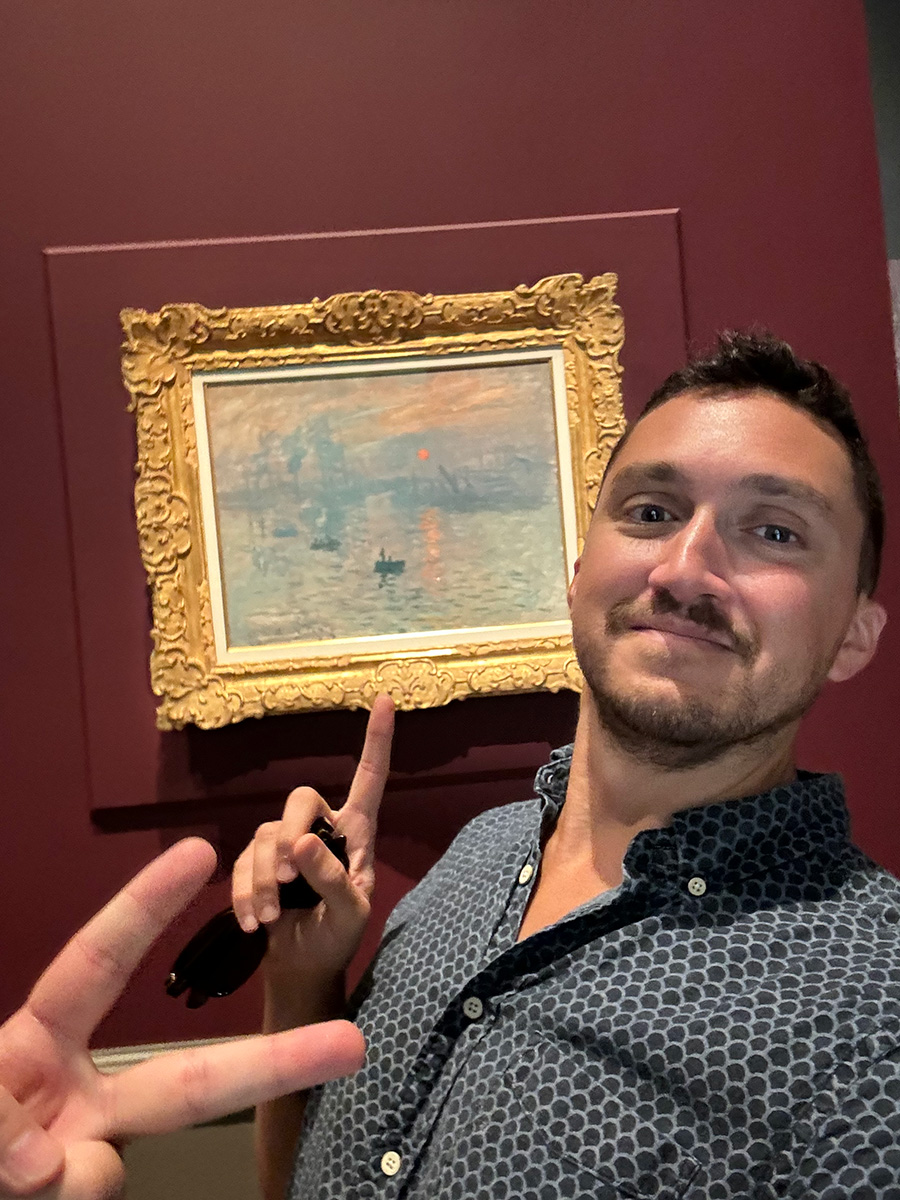
My friend Jude was especially fond of twink David slaying Goliath.

🚶♂️ Wandering in Washington

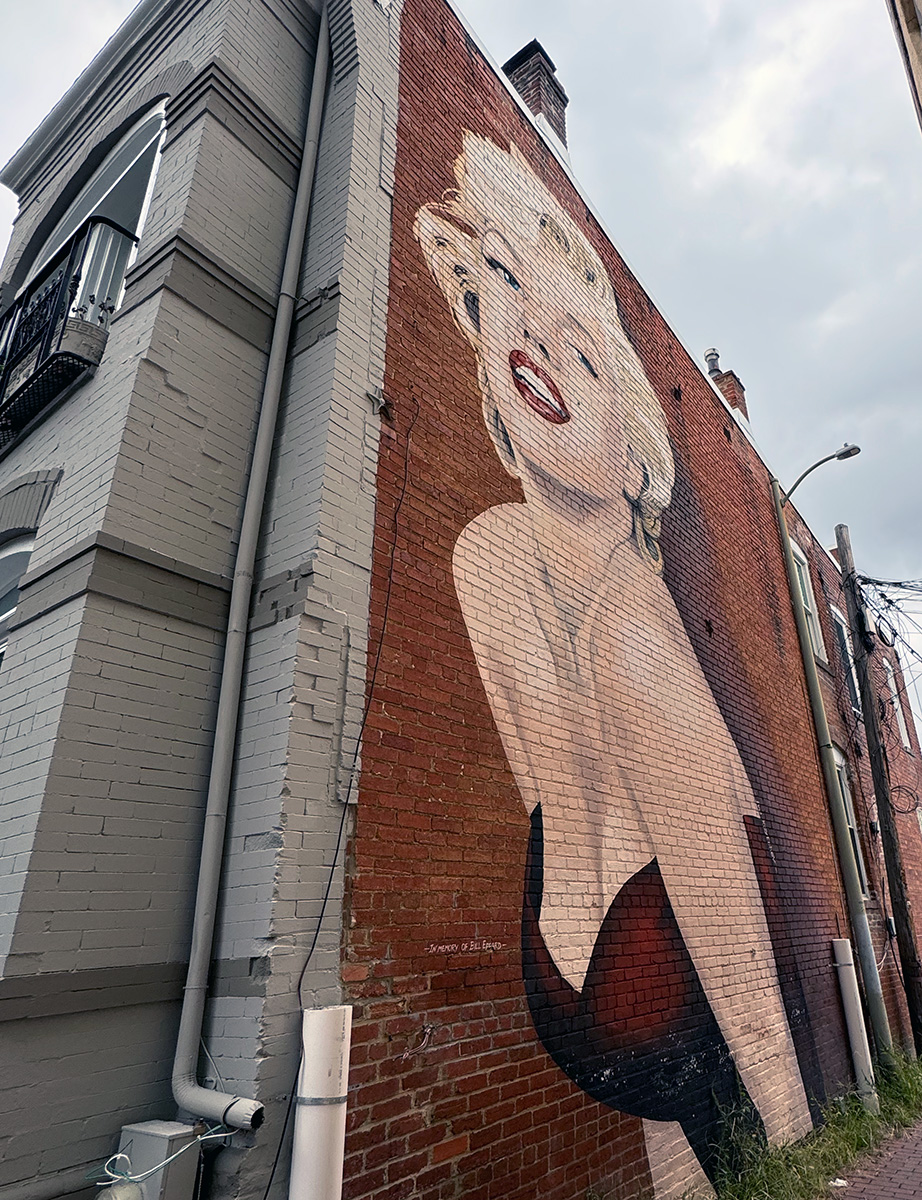

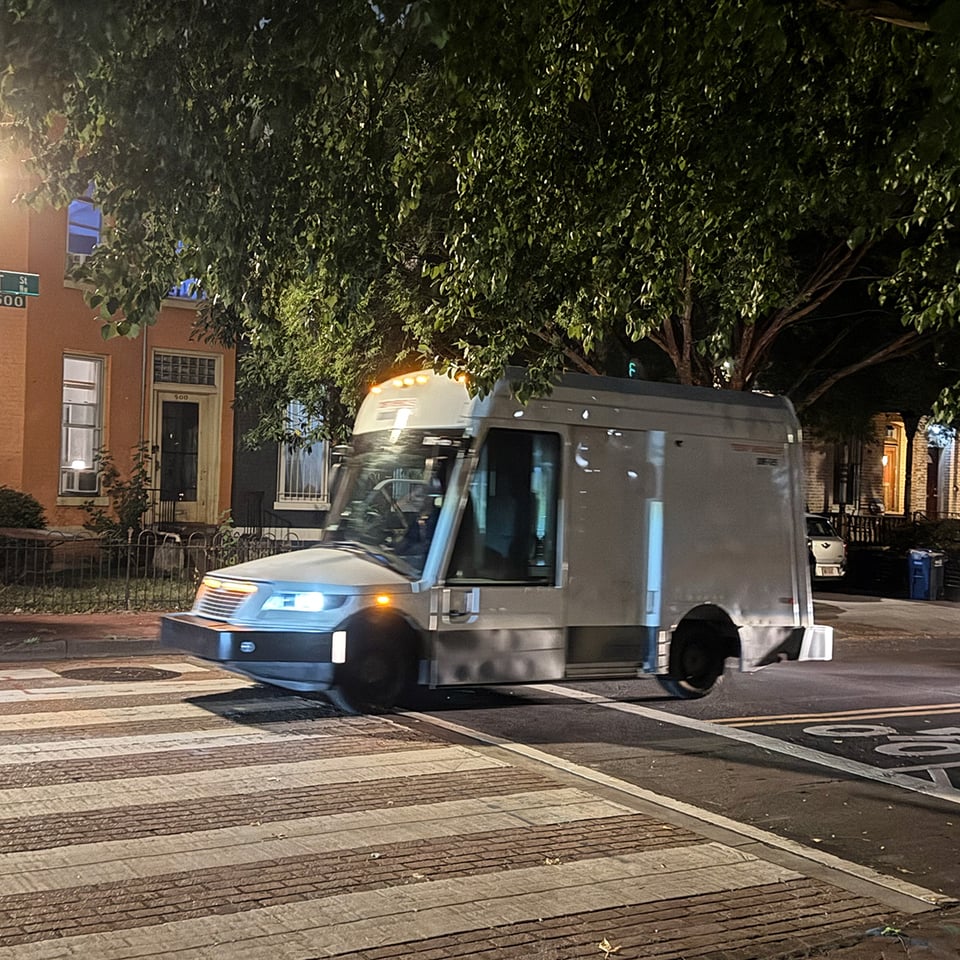
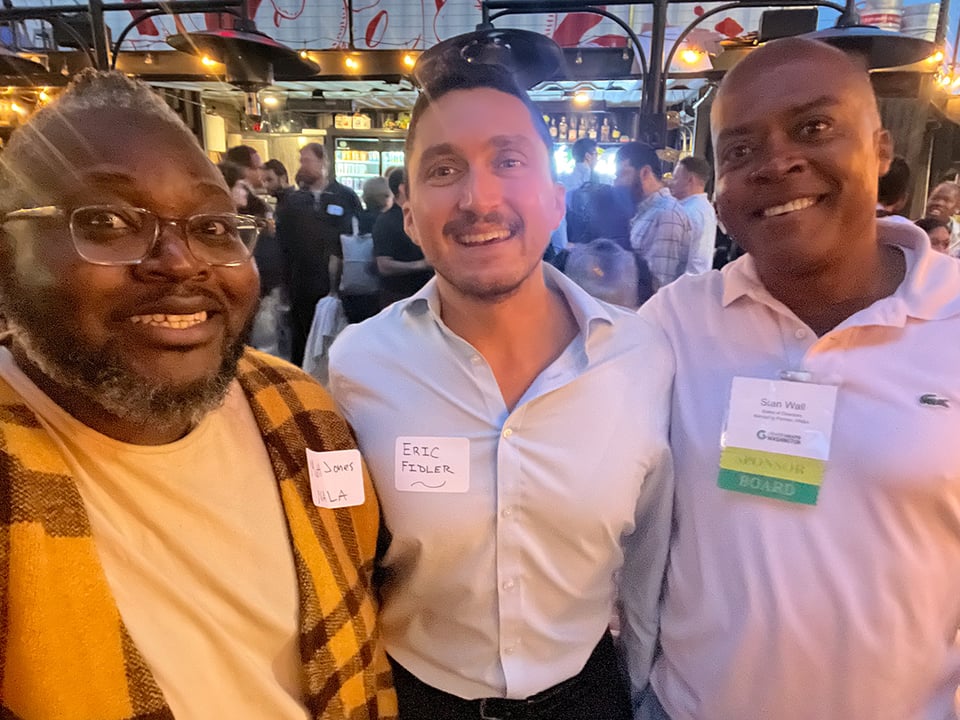

🔗 Assorted Links
- 📝 Metro plans to implement credit card tap-to-ride system by 2025. The agency wants the open payment feature, available in New York and London, ready in time for World Pride. (ABC7)
- 📝 Now you can sit at the President’s desk. A replica of the Oval Office has opened a block away from the real thing. (Axios)
- 📝 Our digital lives need massive data centers. What goes on inside them? We toured a facility in Northern Virginia to see how it works and to understand why water use and energy consumption are such a concern. (Washington Post)
- 📝 As National Zoo awaits new pandas, David Rubenstein pledges $10 million: Local philanthropist has now provided the giant-panda program with $22 million over 13 years. (Washington Post)
- 📝 In the South of France, a Utopian Town Inspired by Ancient Pyramids. Once derided, La Grande Motte, a surreal 1960s resort, may have been ahead of its time. (New York Times)
- 📝 The hidden reason many governments may be moving capital cities: Are government leaders trying to avoid public and media scrutiny? U.S. states with more remote capitals suffer worse governance. (Washington Post)
- 📝 The Death of the Minivan: How did SUVs overtake these cheaper, roomier, more practical vehicles? (The Atlantic)
📊 The Number
Share of Gen Z wishing Twitter had never been invented. Other platforms didn’t fare well either.
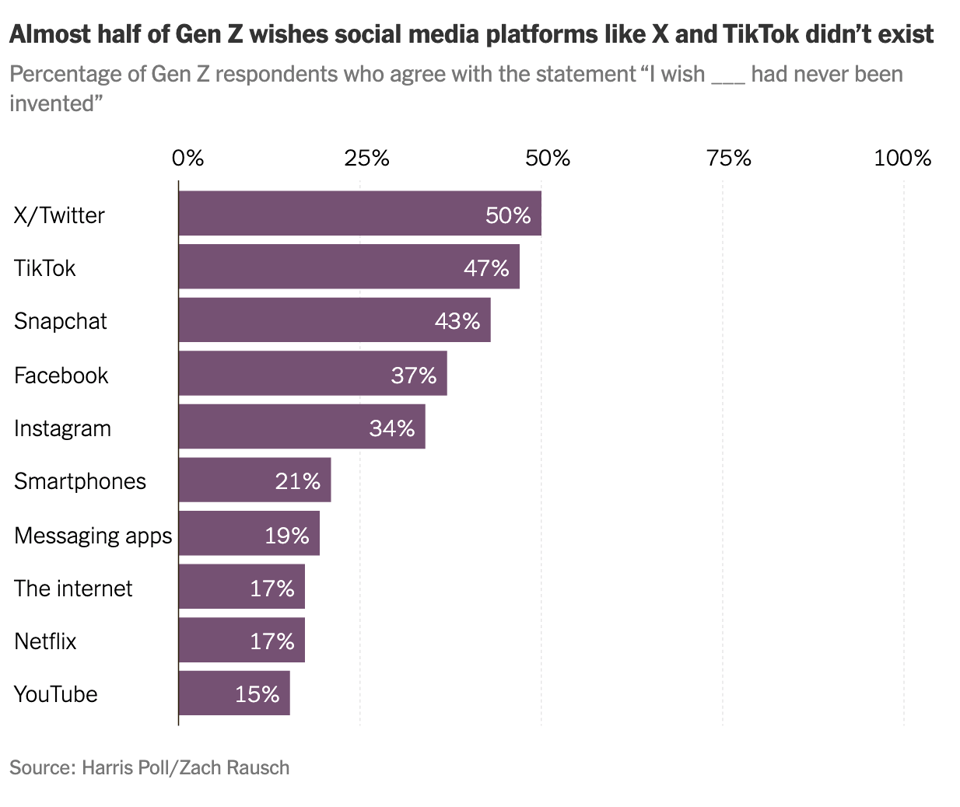
- 📊 Source: What Gen Z thinks about its social media and smartphone usage. The Harris Poll.
- 📝 Cited in: Gen Z Has Regrets. (New York Times)
🎬 The Wrap
Back in April, I wrote about what I learned drinking no alcohol for a month. I ended up extending it to 75 days, concluding the dry streak with cava in Barcelona at midnight.
I identified with author Lilly Dancyger’s essay about her relationship with alcohol:
Once I’d had enough to drink, it felt safe to admit to being sad or lonely or unsure.
Alcohol was a shortcut to intimacy, a way to override my fear of looking foolish or sharing too much. It was the password to a private back room where secrets could be shared without reproach. After a night of drinks and confessions with a friend, I would fall into bed and into the deep sleep of the unburdened.
I look back on all those nights out with friends for years and think about all the times I admitted something I meant sincerely but would never admit without alcohol unlocking that room of secrets.
🗺️ Post Script: Eric’s Gay Guide to Provincetown
💵 cash only | 🎟️ cover charge
Restaurants
- 🐠 Patio/Pepe’s - Both restaurants have similar menus and I suspect they share ownership. Patio’s dining terrace abuts the activity of Commercial Street whereas Pepe’s dining areas are on the harbor front, affording great views. We’ve dined at Patio and got lunch and drinks at Pepe’s second-floor bar.
- 🏩 Red Inn - One of our favorite restaurants for dinner; we book a reservation each year. It’s a higher end restaurant on the waterfront on the far west end of town. You can hail a pedicab to get there.
- 🍺 Provincetown Brewery - We’ve visited the brewery several times for lunch. The food and beer are good. There’s a patio out front on Bradford Street and a spacious interior with a pool table. The walkway beside the brewery leads back to Commercial St.
- 🍳 Liz’s Cafe - This restaurant on Bradford Street has a spacious patio and quaint interior dining room. We’ve dined here for brunch and lunch.
- 🦞 Lobster Pot - A Provincetown institution with excellent seafood. We go every year. Anthony Bourdain worked there very early in his career.
- 🏖️ Canteen - A fast-casual restaurant with chowder, lobster rolls, sandwiches, salads, and more. Grab a picnic table on the beachfront back lot.
Bars
- 🍸💃 Atlantic House - There’s a small bar that’s open year-round on one side, but the dance floor and its attached patios and bars charge a cover. Good place for dancing. 💵 🎟️
- 🍸💃 Red Room - Dance venue that hosts a weekly underwear party. You put your clothes in a bag at the door. It’s cash-only, so tuck some cash in your socks or underwear (hot money!) if you want to buy drinks. 💵 🎟️
- 🍸🎹 Gifford House & 💃 Purgatory - Gifford House is still a working hotel. The main floor has two bars, a long balcony, and, if you’re lucky, a chanteuse at the piano. Purgatory below is dance club and they host a weekly underwear party. (🎟️ Purgatory)
- 🍸 Shipwreck - A bar opposite Gifford House has a big patio and tends to be quieter than most other bars. They take cards and never charge a cover.
- 🍸 Monkey Bar - This small bar, attached to a Thai restaurant, has a long martini list. The ‘tinis are strong! 😵💫
- 🏊♂️ Boatslip Inn - Start the evening with a tea dance 4 - 7 pm. The spacious deck affords wonderful views of the harbor (every gay on Instagram has a photo from the deck railing). There’s an indoor dance floor on one end. 💵 🎟️
Sightseeing
- 🗼 Pilgrim Monument - Climb the tower for excellent views of the cape and bay. There’s a town history museum near base of the tower. Reach the base riding the funicular (ok, technically it’s sparkling inclined elevator) at Bradford and Ryder Streets.
- 🌊 Beaches - Bike the Province Lands bike trail to Race Point Beach or slog through the marshes to Boy Beach from the bike rack.
- 🚢 Provincetown Library - Go to the top floor to see the massive model ship.
Shops
- 🩳 Ball Beachwear - Beach attire, funny shirts, and short shorts that the clerk called “hooker shorts.”
- 🎽 French Feelings - One of the few places to find Barcelona’s Addicted brand in the U.S.
- 👕 ST33LE - Short colorful shorts and patterned shirts for summer and winter.
- 🐙 Karmic Connection - Some really psychedelic hippie clothing, but they also stock cute nautical themed shirts.
- ⚓️ Anchor2Anchor - A relatively new clothing shop. I bought several things here this summer. I even bought a hoodie and I don’t wear hoodies!
- 👑 B Xclusive - The shop where I bought my golden tea outfit.
- 🕯️ Sniffs of Adventure - A scented candle shop.
- 🎄 Monty’s - a year-round Christmas store with burly merman Christmas ornaments.
- 👨🏻 Mate - Provincetown and nautical themed shirts, tanks, and hats. You’ve probably seen Mate’s attire on gays outside Provincetown and didn’t know it.